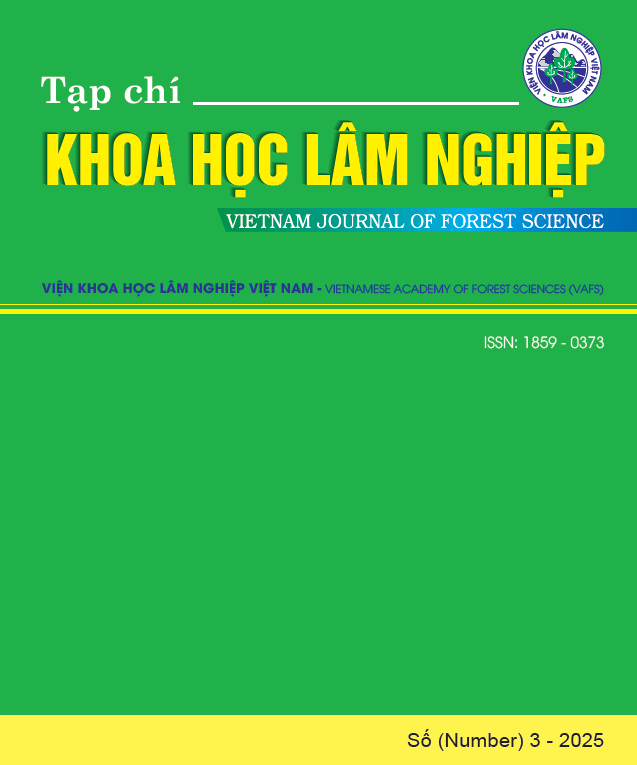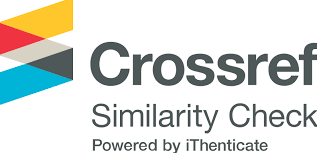DEVELOPING AND TESTING THE CRITERIA AND INDICATORS FOR ASSESSING VIETNAM'S CAPACITY TO MANAGE AND PROTECT THE ENVIRONMENT AND NATURAL HERITAGE
DOI:
https://doi.org/10.70169/VJFS.1056Keywords:
Criteria, management capacity assessment, natural heritage sites, protected areasAbstract
The set of criteria and indicators for assessing the capacity of management and environmental protection of natural heritage sites for natural heritage sites which are conservation areas was built based on the results of data collection at two natural heritage sites, Bach Ma National Park and Than Sa - Phuong Hoang Nature Reserve. The main methods used in this study include the method of inheriting domestic and foreign research documents combined with the Delphi method through 3 rounds of interviews using the quantitative assessment method through statistical values and experiences of a group of 20 experts including scientists from different fields and managers of conservation areas. The results proposed a set of criteria and indicators consisting of 2 parts (1) Basic information table; (2) Criteria and assessment index table including 40 criteria based on 5 management factors. Each criterion has 4 corresponding answers from 0 to 3 (answers a to d, answer a corresponds to no capacity to implement, answer d corresponds to ideal management status). The results of the pilot assessment application at Bach Ma National Park based on the results of group work of 15 officials representing units of Bach Ma National Park, combined with a general assessment workshop showed that the total score was 97/117 points corresponding to a rate of 82.9%, of which 1 criterion was not applied. Although there were still comments, the assessors basically showed that the set of criteria could be used for assessment and gave relatively good and suitable results for the system of natural heritage sites that are protected areas of Vietnam.
References
1. Başkent, E.Z., 2023. Assessing and developing improvement strategies for the protected area management (PAM) planning process/effectiveness in Turkey. Environmental Development, 46, p.100867.
2. Coad, L., Leverington, F., Knights, K., Geldmann, J., Eassom, A., Kapos, V., Kingston, N., de Lima, M., Zamora, C., Cuardros, I., Nolte, C., Burgess, N.D. and Hockings, M., 2015. Measuring impact of protected area management interventions: Current and future use of the Global Database of Protected Area Management Effectiveness. Philosophical Transactions of the Royal Society B, 370 (1681): DOI: 10.1098/rstb.2014.0281.
3. Dự án Các – bon và Bảo tồn Đa dạng sinh học (CARBI 2). 2024. Công cụ theo dõi hiệu quả quản lý phiên bản 4 – Vườn Guốc gia Bạch Mã.
4. Hockings, M., Stolton, S., Leverington, F., Dudley, N. and Courrau, J. 2006. Evaluating Effectiveness: A framework for assessing management of protected areas, (2nd edn) World Commission on Protected Areas, IUCN, Gland, Switzerland.
5. Hockings, M., James, R., Stolton, S., Dudley, N., Mathur, V., Makombo, J. and Courrau, J., 2008. Enhancing our heritage toolkit assessing management effectiveness of natural world heritage sites. World Heritage Centre. file:///C:/Users/admin/Downloads/publi_wh_papers_23_en.pdf
6. Hwang, G.H., Chen, J.M., Hwang, G.J. and Chu, H.C., 2006. A time scale-oriented approach for building medical expert systems. Expert Systems with Applications, 31(2), pp.299-308.
7. Leverington, F., Hockings, M., Pavese, H., Lemos Costa, K. & Courrau, J., 2008. Management effectiveness evaluation in protected areas: A global study. Supplementary report No. 1: Overview of approaches and methodologies. University of Queensland, Gatton, TNC, WWF, IUCN - WCPA. Australia.
8. Murry, J.W. and Hammons, J.O. (1995) Delphi: A Versatile Methodology for Conducting Qualitative Research. The Review of Higher Education, 18, 426-436. https://doi.org/10.1353/rhe.1995.0008
9. Nolte, C., Leverington, F., Kettner, A., Marr, M., Nielsen, G., Bomhard, B., Stolton, S., Stoll-Kleemann, S. and Hockings, M., 2010. Protected area management effectiveness assessments in Europe: A review of application, methods and results.
10. Pomeroy, R. S., Parks, J. E. & Watson, L. M. 2004. How is your MPA doing?: a guidebook of natural and social indicators for evaluating marine protected area management effectiveness, IUCN.
11. Stolton, S., Dudley, N. and Shadie, P., 2012. Managing Natural World Heritage. UNESCO.
12. Stolton, S., Dudley, N. and Hockings, M. 2021. METT Handbook: A guide to using the Management Effectiveness Tracking Tool (METT). Second edition guidance for using METT-4. WWF, Gland, Switzerland
13. UNESCO, 2024. PhysicsWeb. https://whc.unesco.org/en/list/ Ngày truy cập 13 tháng 3 năm 2025
14. IUCN and World Commission on Protected Areas (WCPA), 2017. IUCN Green List of Protected and Conserved Areas: Standard, Version 1.1. Gland, Switzerland: IUCN.









